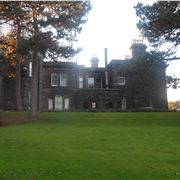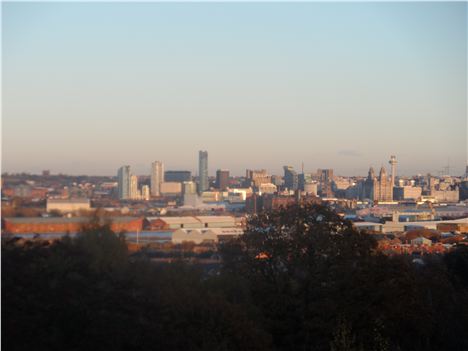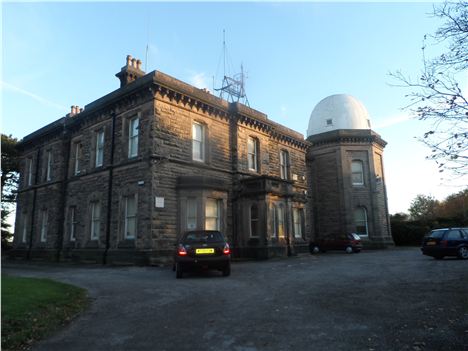ONE of Merseyside’s leading historical monuments is to be turned into luxury flats.
Bidston Observatory, a Grade ll listed edifice that dominates the Wirral skyline, was once the world's leading centre for tidal research.
Now it is subject to a bidding war by developers. This has been made possible because Wirral Council relaxed its own planning regulations to grant listed building consent.
Change
Agents have imposed a November 30 deadline for “best and final offers” for the distinctive domed building on Bidston Hill which enjoys panoramic views of Liverpool and Wales.
The local authority decided to override its own guidelines which insists new homes development should focus on regeneration
But the move has angered conservation group the Friends of Bidston Hill which is calling for a halt to the deadline race. Spokesman Roy Caligari said: “We are most concerned about the potential consequences for Bidston Hill, and we disapprove of the manner in which the sale is being conducted.
“Prospective buyers have only until 30th November to make their “best and final offer”, and to demonstrate that they have funds in place. The first viewings are scheduled for today (NOV 22) which makes it impossible for new buyers or a community co-operative to obtain a surveyor’s report or arrange a mortgage-in-principle in time."
The Observatory is being sold with listed buildings consent for conversion into four residential units.
He went on: “120 years ago, the Bidston Hill Committee campaigned to secure the land on Bidston Hill for the public. After many years and many setbacks they succeeded. They prevented the building of 400 dwellings along Vyner Road, and raised the money to buy some 46 acres of land on Bidston Hill.
"The parkland on Bidston Hill that we all enjoy today is thanks to their untiring efforts. We need the Bidston Hill Committee to be re-born today. Their work is not quite finished. But we need time.
“We appeal to NERC and to Wirral Borough Council to delay the sale. There are still a number of options for the community to explore.”
Historian Peter Crawford, of Bidston Preservation Trust, said: “It will be a sad day when this important building is turned into flats. We have pressed for years for the creation of a heritage museum given its rich history without having the support needed to get it off the ground.”
Estate agents Bennan Ayre & O’Neill say there has been interest from a number of parties keen to acquire the 14,500 sq ft site.
Planning permission for four flats was granted after years of marketing the landmark failed to attract sufficient interest.
Fortress
Planning consultants Wrigley says the relaxation of policy will enable developers to “bring back into use an important local building of significant interest. It is currently deteriorating and a target for vandalism.”
The development will also have a considerable impact on locals who like to ramble and take in the sights from Bidston Hill. The 147 year old Observatory is expected to be turned into a fortress with access restricted by railings, fences and gorse bushes.
Since scientists moved out to the University of Liverpool in 2004 the building with its famous domes has been occupied by "guardians". These are people recruited to occupy defunct public buildings to stop them declining and being vandalised. They pay a low rent and receive free heating and water all year.
Bath-based Wrigley produced a report on the building which states: “It could be argued that the best use of the building would be some form of museum that could record the significant role that it had in the development of oceanographic science. For many years it was the world’s leading centre for tidal research.
"At the time of closure of the Bidston site an attempt was made to establish a museum within the observatory but it foundered due to lack of funding and the withdrawal of support by the local authority. It is understood that this was due to the lack of a credible business plan.
“During the period between the closure of the site and now, there has been some interest from a housing developer, a hotel developer and it has been marketed forI business use. None of these initiatives has led to a firm proposal.
Demolished
“In the absence of commercial interest for the building, and with the fabric starting to deteriorate, the option is a development that could be implemented with the minimum interference with the building, which would seek to restore much of its original character, and which would help to secure its long term future.”
An adjacent empty building called the Proudman laboratory was demolished earlier this year while the site also houses Bidston Lighthouse, privately occupied, and some other cottages.
Wirral Council said; “There are material considerations in favour of development which outweigh planning policy for new housing developments.”
Tide of change

Bidston Observatory was built in 1866 dedicated to time and tide calculations. Liverpool’s longtitude was calculated by the first director John Hartnup and mariners from all over the world sent their chronometers to be calibrated there. Its machines were also used to predict tides for the D-Day landings.
Before scientists relocated, the Observatory was also used to control the raising and lowering of the Thames Barrier.
It is now owned by the National Environment Research Agency which has been desperate to sell since it became redundant.

















